Butterfly bush (Summer lilac) is a fast-growing, deciduous shrub originates in China. Even though it isn’t actually a host plant for butterflies, you will adore spiked, 3 to 10 inches (7.6 – 25.5 cm) long trusses blooming throughout summer and autumn. They are usually lavender-pink, but you can grow varieties with white, orange, pink, blue, or purple flowers as well.
Be careful when deciding to plant this bush in your garden since it is concerned an invasive species in most states in the US. It spreads aggressively in warmer regions and quickly stifles native plants crucial to butterflies and birds. Nowadays, you can find non-invasive Butterfly bushes cultivating in the southwestern US.
What to Know Before Planting Butterfly Bush
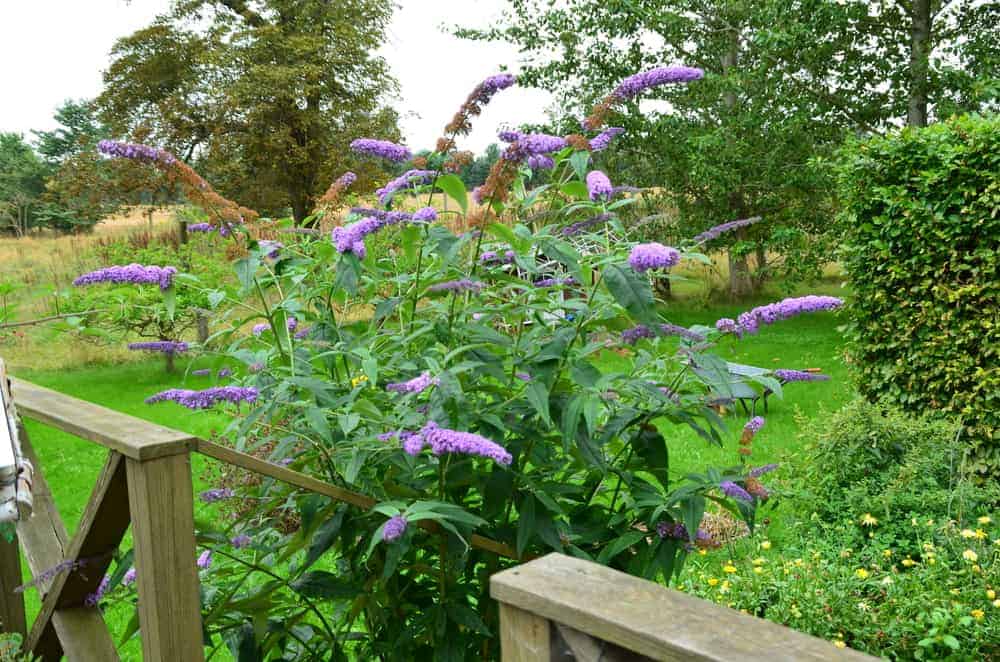
Butterfly bush got its name after Adam Buddle, the British botanist who brought this plant from Asia to England in 1774. It became popular right away thanks to its beautiful blooms.
It was easy planting and growing it in different conditions, plus its resistance to drought, stress, and most diseases were beneficial.
Even today, gardeners occasionally discover new gorgeous varieties of this bush in some regions of the Himalayas and China. However, many experts question the appropriateness of its planting in the US.
As a highly invasive flower, it often jeopardizes native plants and dispels butterflies and birds from their natural habitat. Let’s consider possible problems.
Butterfly bush is a highly invasive plant
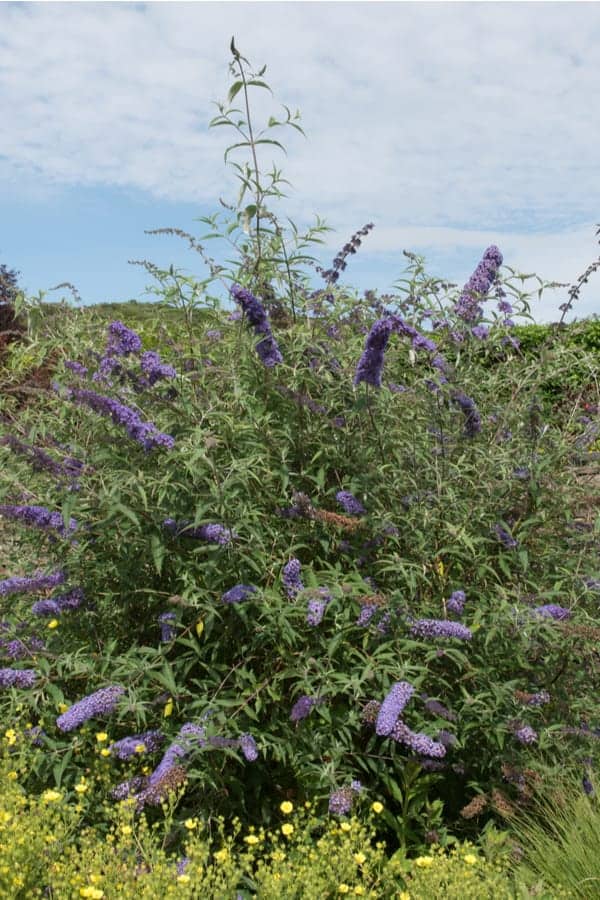
I suppose that companion plants keep this bush under control in Asia, where this plant originated. In the US, it is considered invasive because it crowds a native species of flowers and most beneficial plants.
American native varieties |
||
|
Variety |
Latin name | State |
| Orange Woolly Butterfly Bush | B. marrubifolia |
Chihuahuan Desert |
|
Wand Butterfly Bush |
B. racemosa | Texas |
| Escobilla Butterfly Bush | B. scordioides |
Texas, Arizona, and New Mexico |
|
Rio Grande Butterfly Bush |
B. sessiliflora | Texas and Arizona |
| Utah Butterfly Bush | B. utahensis |
Utah, Arizona, Nevada, and California |
Even though this bush looks gorgeous, you should think about native North American plants as well. They have grown in our environment for centuries and also deserve to thrive freely. Besides, you don’t want just one species in your garden, right?
Anyway, if you fall in love with this bush as I do, plant it in your garden, but take care of it well. Regular pruning will keep it under control. Plus, be careful with its seeds. An ideal solution is deadheading of flowers as soon as they wilt.
One more way to solve the problem is to choose one of the native or seedless species. Also, it will be helpful if you grow the plant variety of an appropriate size suitable to the environment.
Butterfly bush doesn’t attract butterflies

When I saw this plant for the first time, I thought about butterflies immediately. However, despite the fact this bush is beautiful and has gorgeous flowers full of nectar, it is actually not beneficial for butterflies at all.
Believe it or not, if you grow just Butterfly bush in your garden, you won’t see any butterflies around. They simply need proper host plants for reproduction.
That means that larvae of these beneficial insects can feed just on the foliage of native species. Without the oak tree, butterfly weed, or milkweeds, they can’t survive.
Butterfly bush makes the life of birds harder
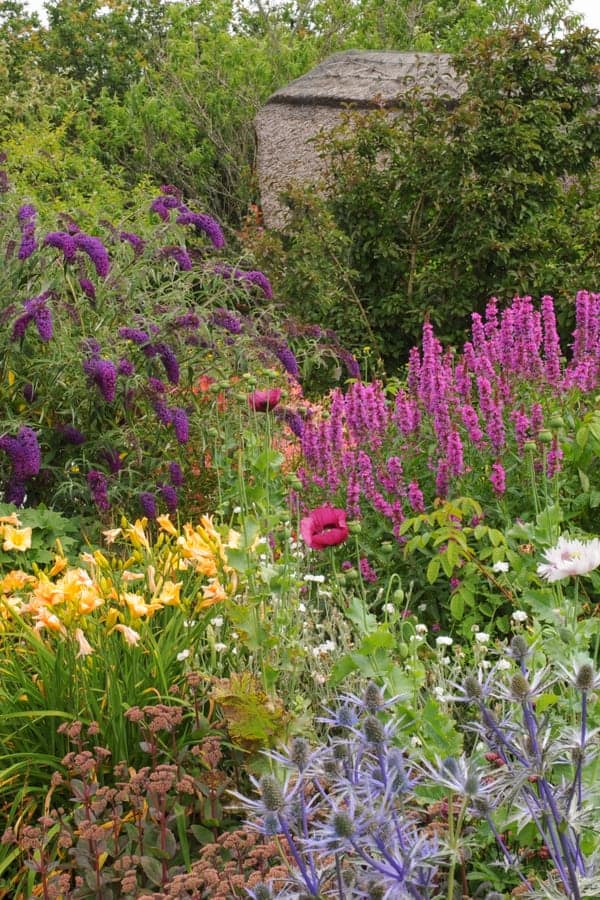
You will also have the same problem with birds. A Butterfly bush in your garden makes it harder for them to survive in your neighborhood. As an imported plant, this bush doesn’t contain particular caterpillars, needed for birds while feeding their young.
The results of some studies show unexpected data. If you plant just one Butterfly bush in your yard without other native species, you will remove at least 75% of necessary food for local birds. Therefore, be careful and make a useful and convenient combination of plants in your yard.
The Most Popular Varieties of Butterfly Bush
Black Night
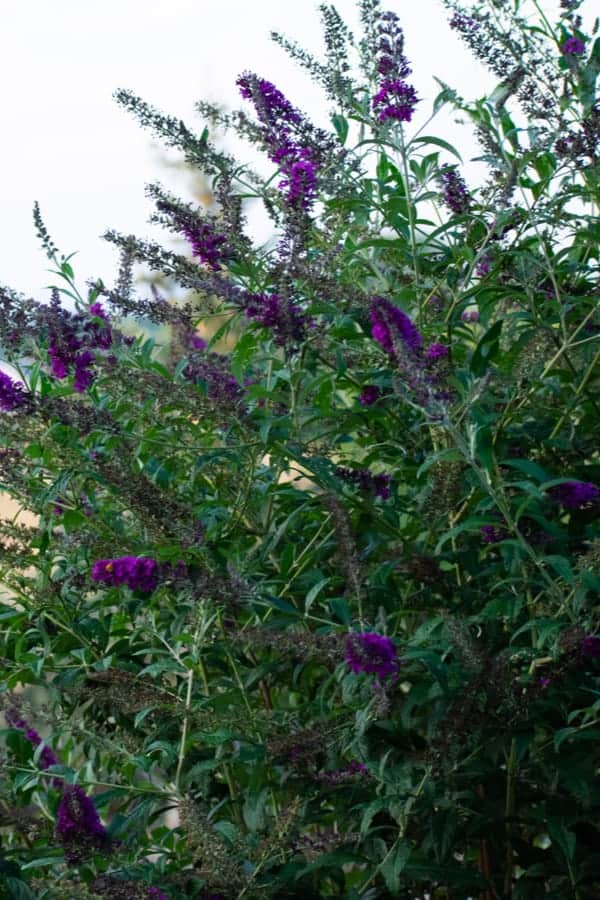
It is old and possibly the darkest variety of this plant in the world. It has shorter flowers on 15 feet (4.6 m) height stems.
Dwarf Blue
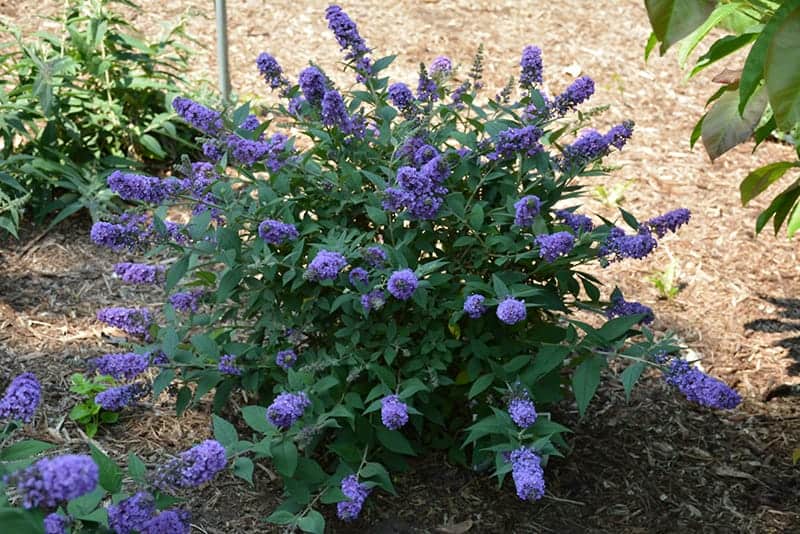
It was previously considered a dwarf variety, but it can actually reach 12 (3.7 m) height. If you grow this plant, you will enjoy its fantastic lilac blooming.
Twilight
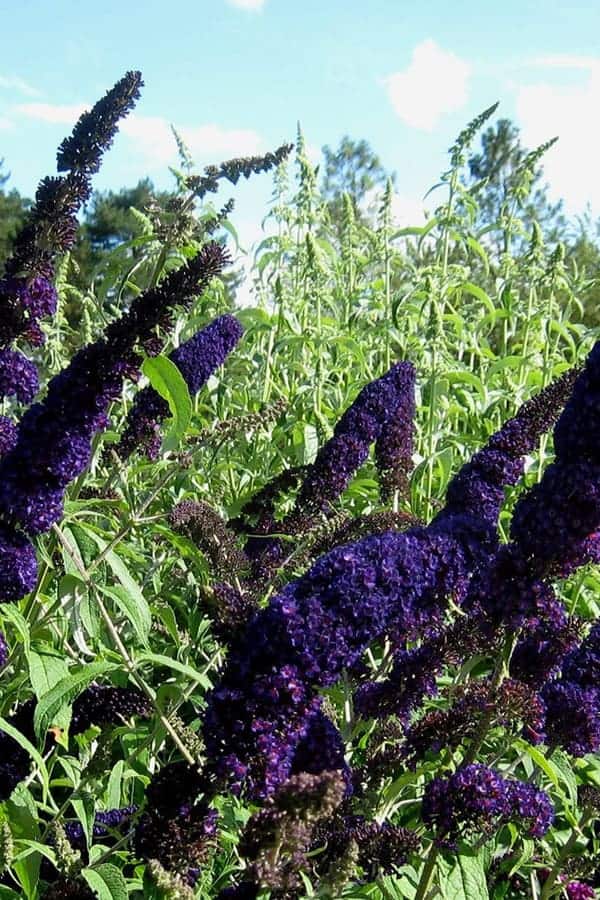
These highly drought-resistant plants bloom dark purple. Their average height is about 10 feet (3 m).
Pink Delight
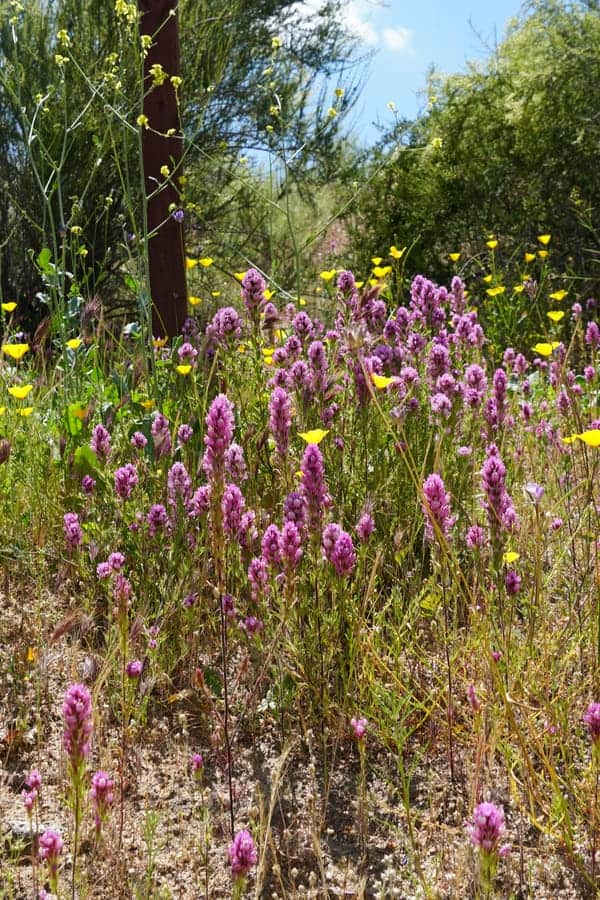
You will enjoy long, bubblegum pink blooms of this 8 feet (2.4 m) tall plant.
Royal Red
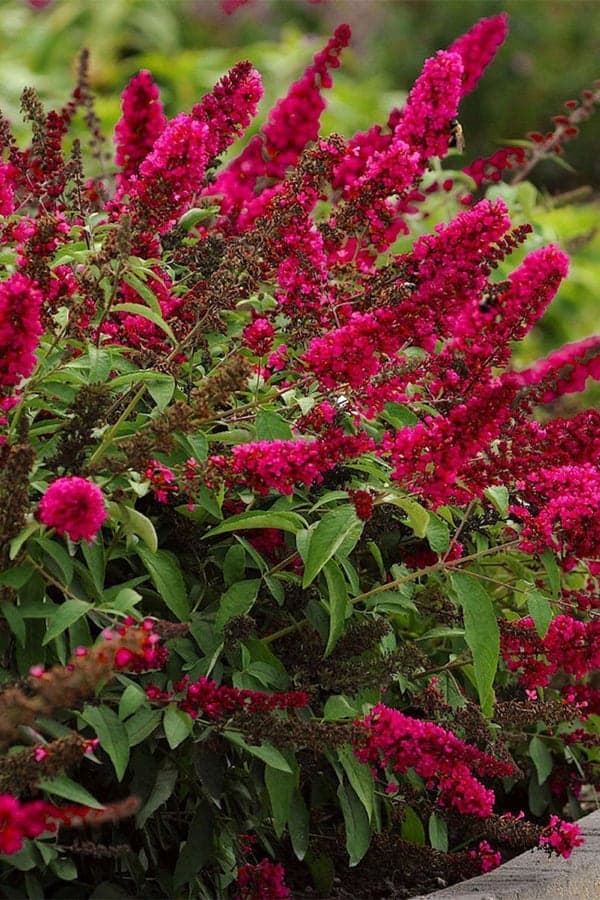
It is a small, 6 feet (1.8 m) tall shrub with short, maroon flowers. It may look messy for some gardeners, but I love it.
Harlequin
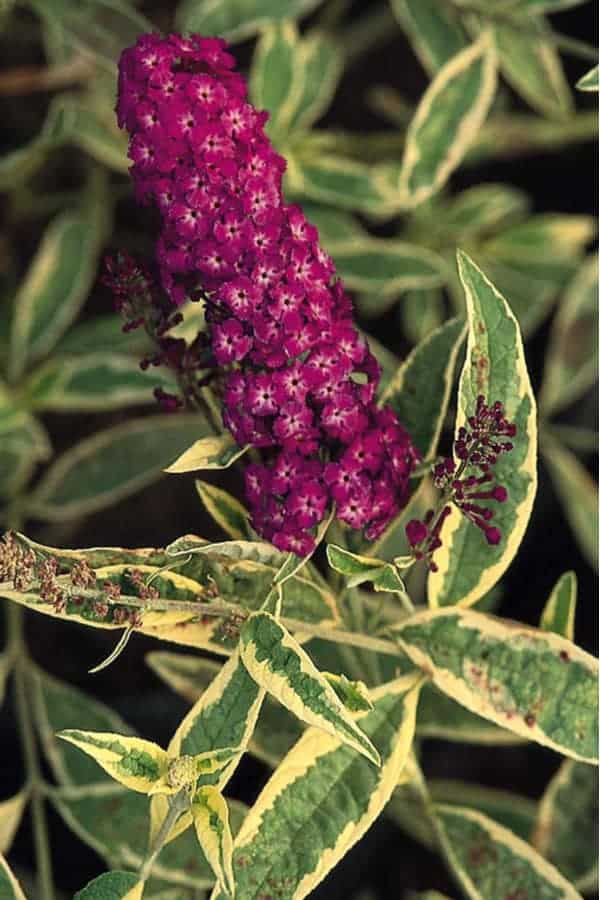
That adorable, 4 feet (1.2 m) tall variety is highly popular because of its lovely maroon blooms and creamy and green leaves.
How to Plant Butterfly Bush in Your Garden
Propagating by seeds
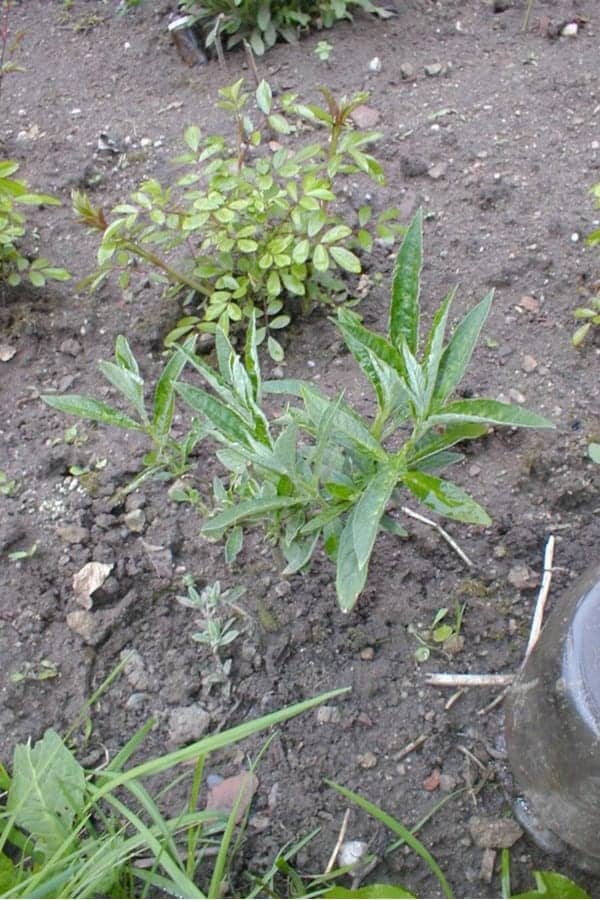
It is a slow process of getting the Butterfly bush, but there is some enjoyment in that activity. Collect seeds and pre-chill them for about a month before you want to start planting.
Place seeds to the ground and cover with a thin layer of the soil. Take care to provide plenty of light for them to make the germination successful. Also, keep the ground moist for a few months, which is the period your seeds need to sprout.
Propagating by cuttings
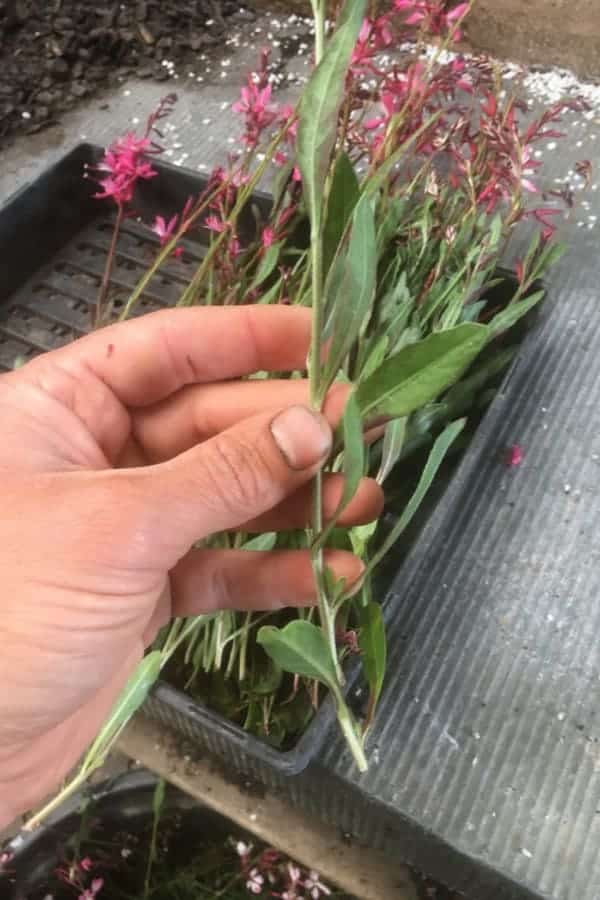
Propagating this bush from cuttings is probably the easiest and most comfortable way to get a new plant. Spring and summer are ideal periods for taking branch tip cuttings while pruning your bush.
They need to be at least 3 inches (7.6 cm) long. Cut it at an angle and remove leaves from the bottom. That will allow better absorption of necessary nutrients and facilitate the creation of young roots.
To speed up the process, it is an excellent idea to dip the tip in rooting hormone before planting cuttings into a pot. Put it in a windowsill with a lot of sunshine and necessary shadow during afternoons. If the soil is well-moist and worm, you can expect the development of the roots within a few weeks.
Propagating by division
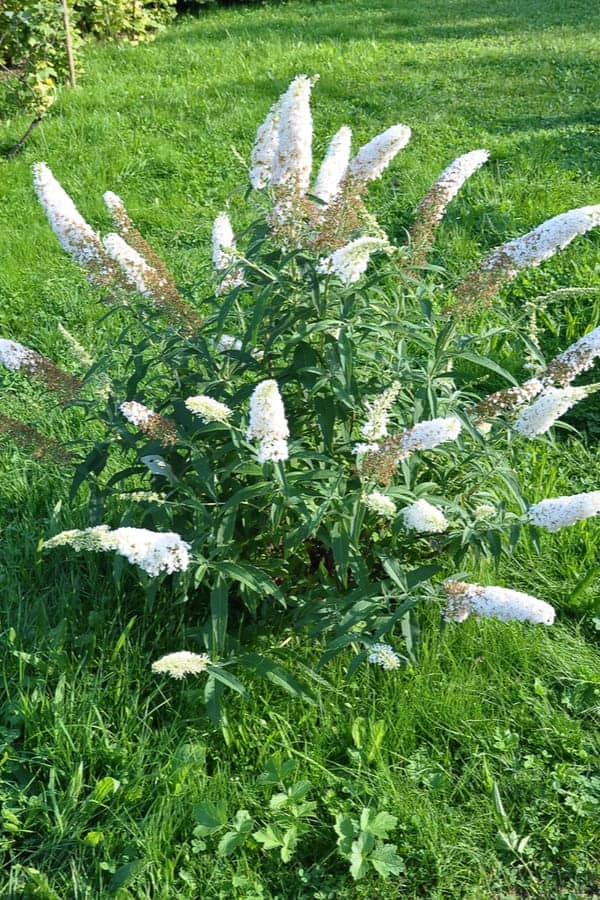
It is not complicated to propagate this bush through the division of the roots. Depending on the region where you live in, the best time to divide pieces of the roots is in spring or autumn.
After digging up the mature plant, you should remove excess earth from the roots. Then use a spade shovel to separate roots or do it by your own hands. Transplant pieces into a pot or directly into your garden if the temperatures are not too low during winter.
Transplanting
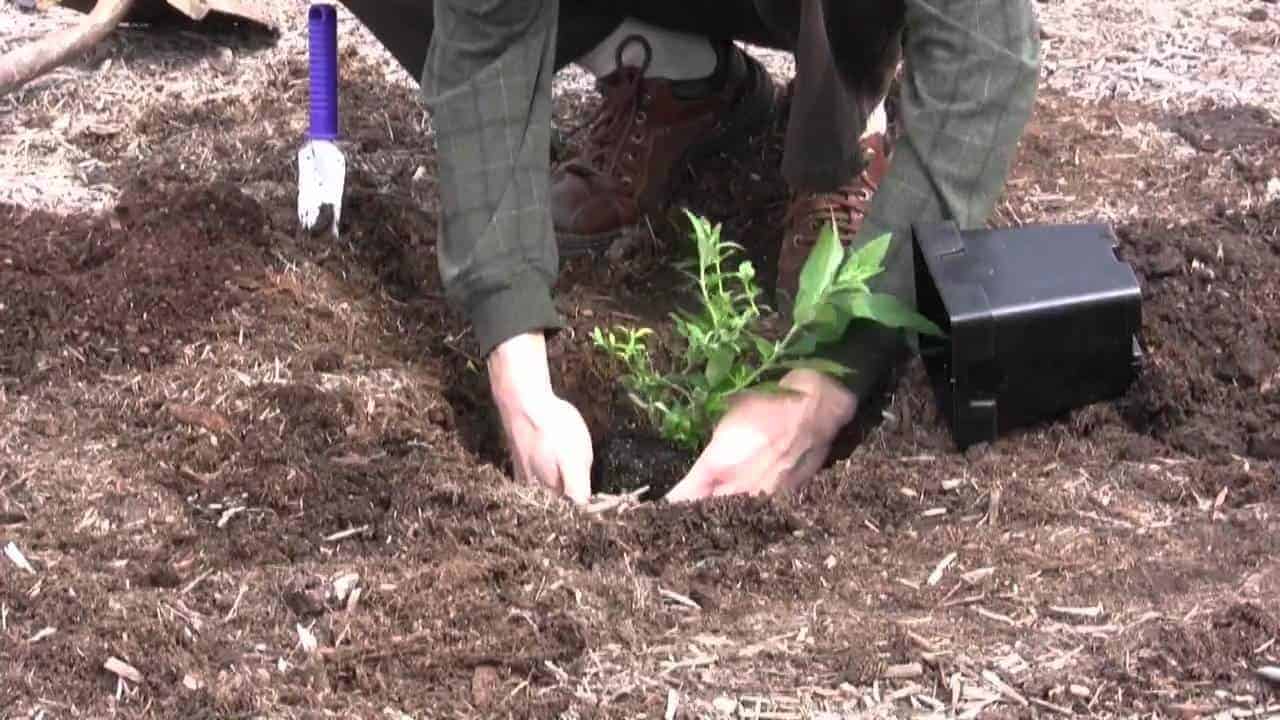
Since this plant is hardy and vigorous, it is not a big deal to transplant it. Do it in early spring or autumn while your bush doesn’t bloom.
If you decide to transplant the shrub in spring, do it before the new growth starts. Otherwise, wait until mid-fall, when the temperatures become lower.
Use a digging shovel and dig a hole, deep enough to place plant roots without damaging. Mix the native soil with organic compost and fill the hole. Take care to put a plant the way that the root ball is on the level of the ground.
Add water to the hole and keep watering your bush regularly during the first growing season. If the conditions are favorable, transplants will establish within five to six weeks. Protect your new plant by spreading a 2 to 3 inches (5 – 7.6 cm) thick layer of mulch around it.
How to Care Butterfly Bush in Your Garden
Space
This plant requires a lot of space. Therefore, plant it about 10 feet (3 m) apart to let the bush thrive.
Soil
Butterfly bush can grow in the barren land, but it is better planting it in a well-drained, mid-range loam, with a pH in a range of acid to neutral.
It is crucial to avoid amending the soil to prevent drainage problems. Put your shrub directly into the natural ground and never add compost, topsoil, or potting soil when planting.
Light
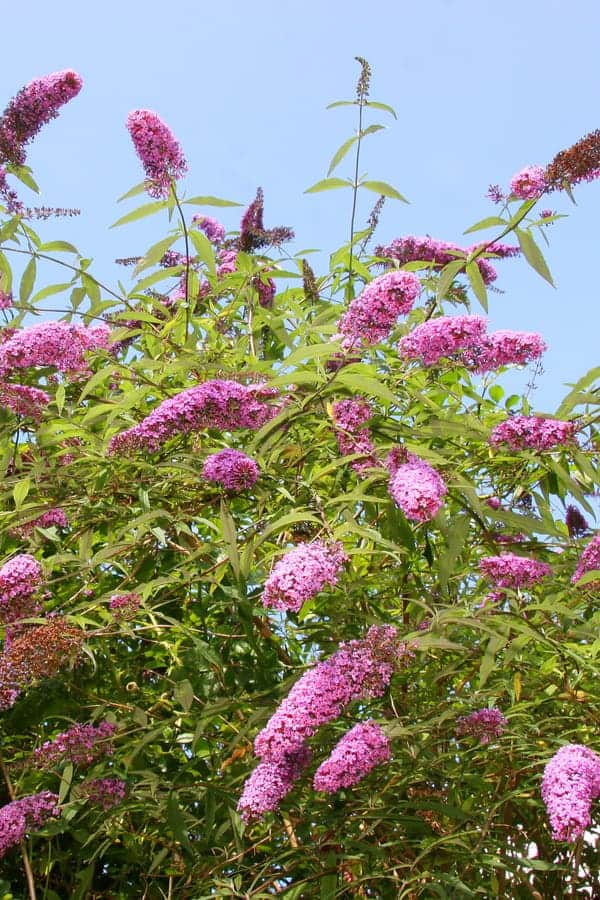
Your shrub needs full sun and at least eight hours of bright sunlight a day. However, it would be nice to provide afternoon shade for young plants planted in a pot.
Temperatures
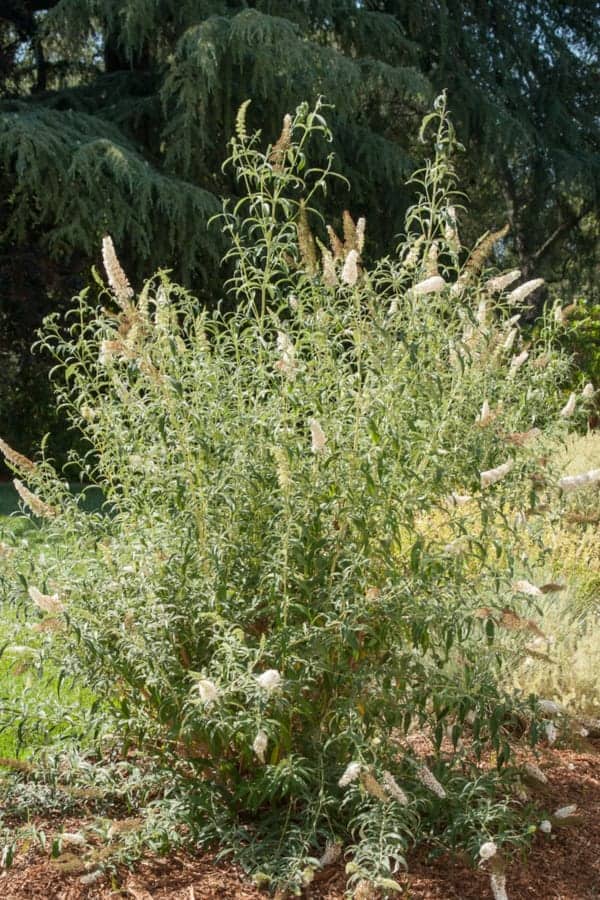
Your Butterfly bush will tolerate the temperatures of 20 F (-6.7 C) in winter. During summer, it will thrive until the temperatures don’t go above 90 F (32 C). During really hot periods, the plant will stop developing flower buds.
Watering
You should water young plant to allow developing the root system, but avoid waterlogging to prevent root rot and death of the plant.
After establishing, your shrub will become moderately drought-resistant and needs occasional watering. On average, 1 inch (2.5 cm) of liquid per week will be enough in summer or during drought periods.
Fertilizing
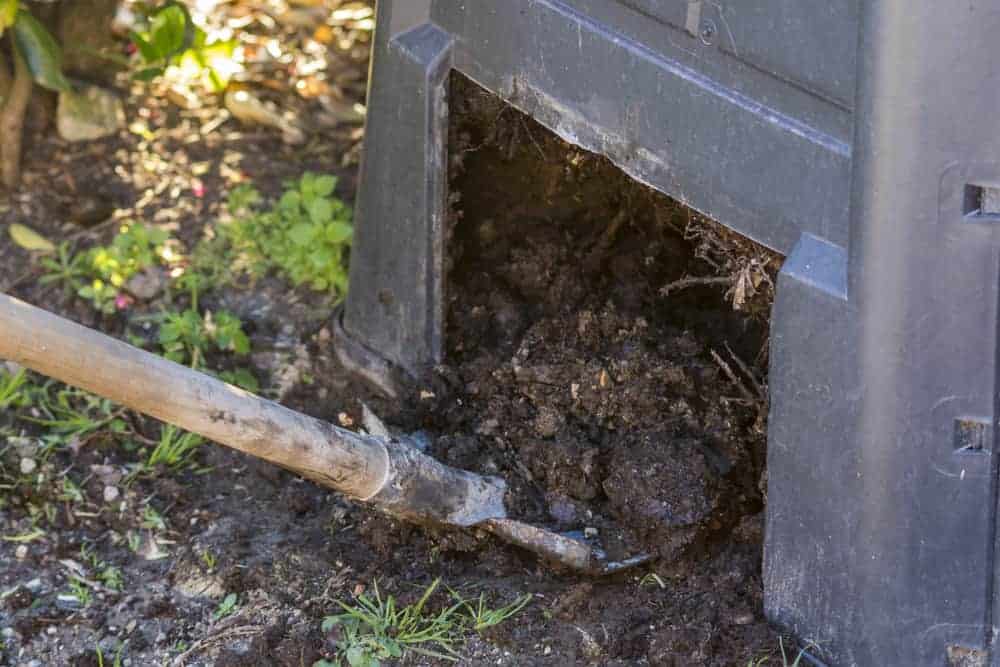
You shouldn’t fertilize your Butterfly bush too much to avoid promoting dense leaves without desirable production of flowers. It will be enough to add a thin layer compost or controlled-release fertilizer in spring.
Mulching
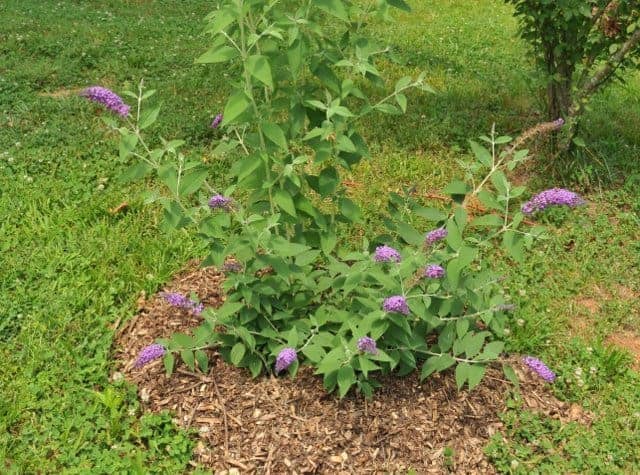
A 6 inches (15 cm) thick layer of mulch will protect the roots of your bush in winter, especially in colder regions. However, avoid placing mulch directly around the stems.
Pruning and deadheading
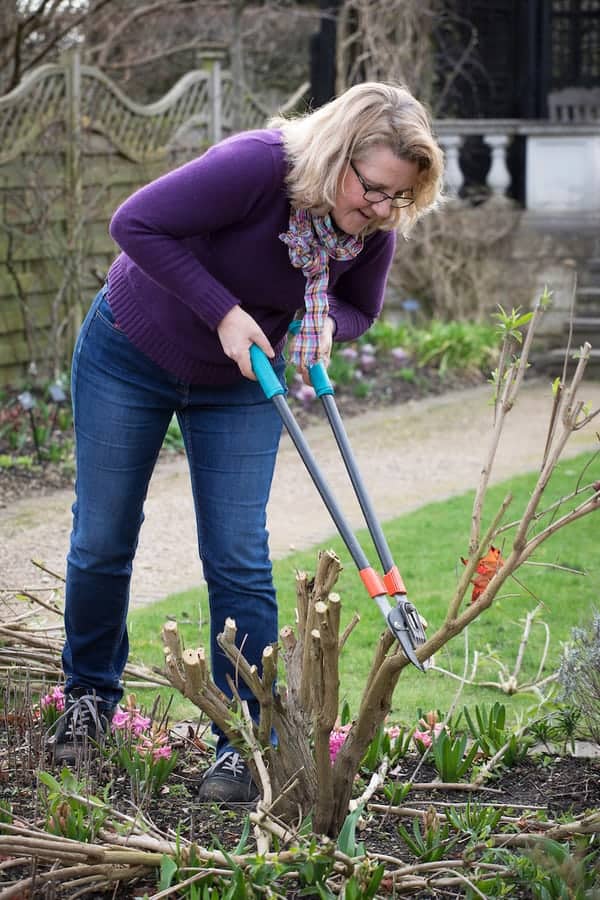
To encourage new flourishing, you should remove spent flowers regularly. Therefore, deadhead them as soon as they start withering. There is one more advantage of this action.
Regular cutting of old flowers will prevent spreading seeds, and keep this invasive plant under control. These precautions are not necessary if you grow a sterile variety of this plant.
Also, try to prune your Butterfly bush in early spring, at least 12 to 18 inches (30.5 – 46 cm) from the ground. That way, you will create a dense, well-shaped shrub full of large flowers.
Butterfly Bush Pests and Diseases
Butterfly bush is quite resistant to common pests and diseases, but sometimes you may have problems with:
Caterpillars
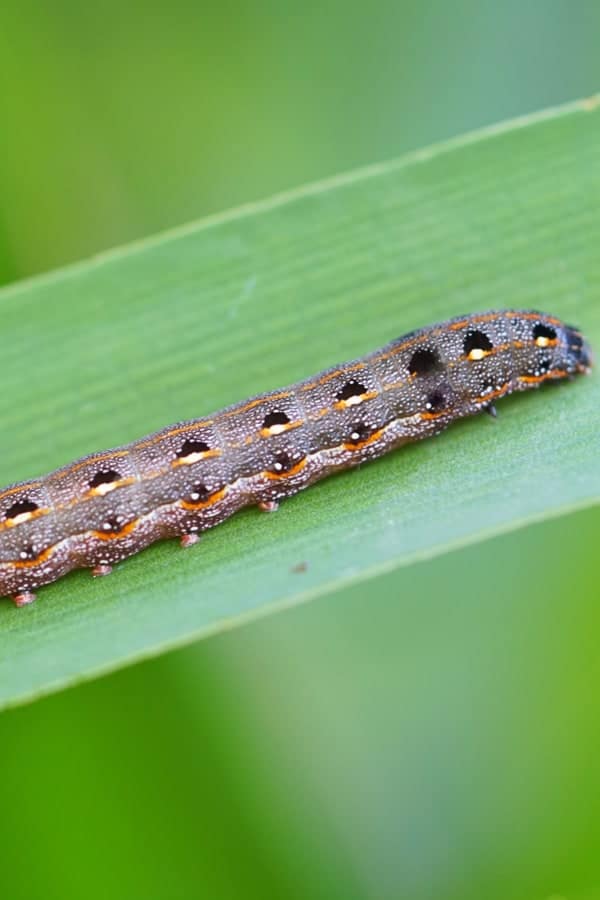
Expect them to appear in autumn. To protect your bush, you should spray soap water solution directly on the leaves. Handpicking them is also an appropriate solution if you try to avoid chemicals in your garden.
Aphids
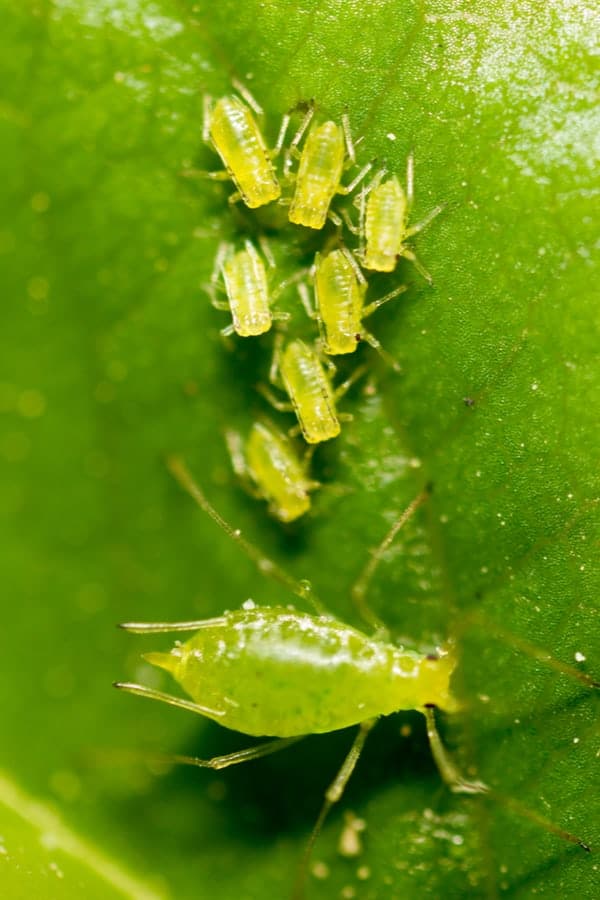
Get rid of these tiny sap-sucking insects by using summer oil or insecticidal soap. You can also spray your plant with some efficient insecticides.
Brown stink bug
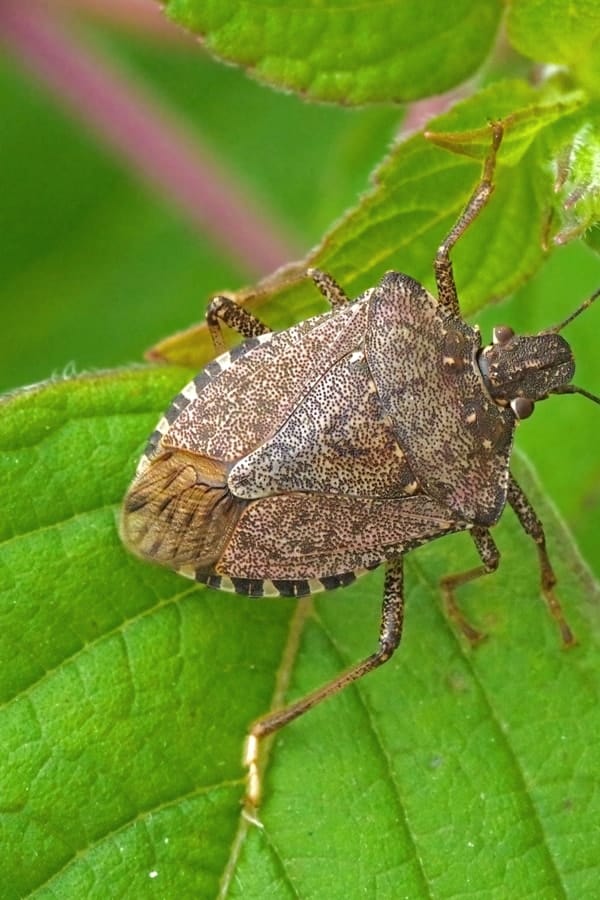
This bug sometimes attacks Butterfly bush and destroys leaves after laying eggs on their underside. Get rid of them by using adequate insecticides.
Spider mites
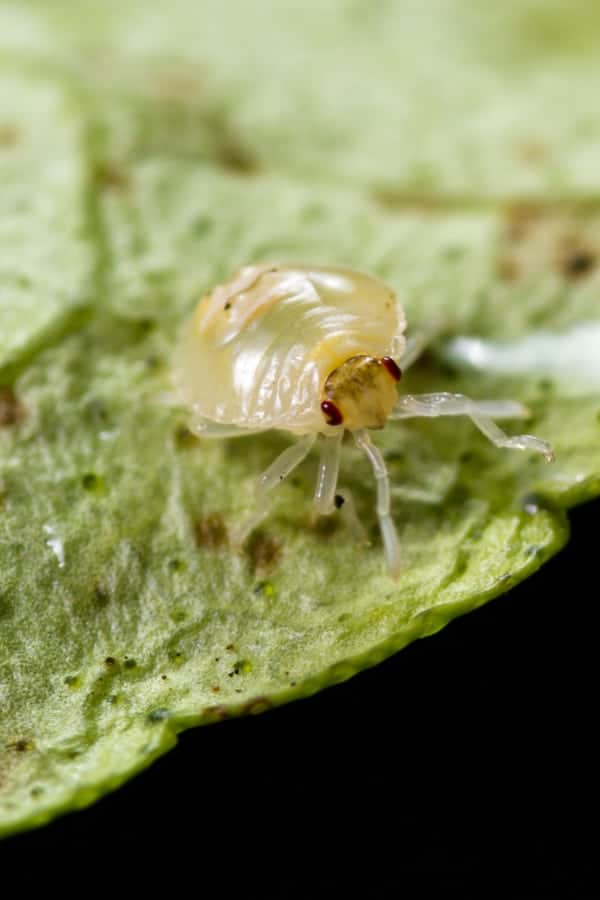
You may notice these arachnids when your shrub is a lack of water. If you can attract ladybug to come to your garden, you won’t have any problem with spider mites. Spraying a bush with water or insecticidal soap can be helpful as well.
Nematodes
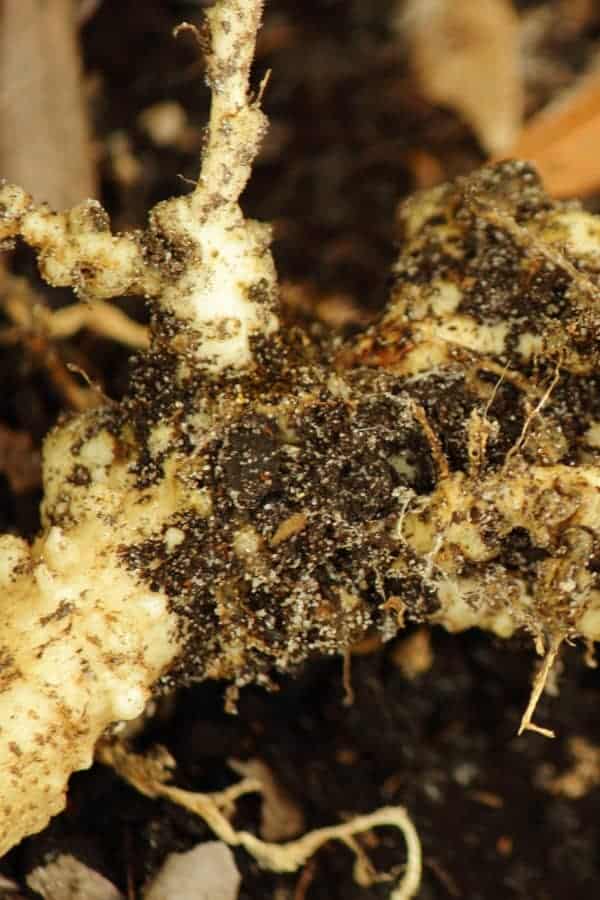
Butterfly bush may become a potential host for nematodes. These small worms live in the wet ground and feed on roots of this shrub, leaving them discolored and short. You can’t control these creatures, but proper fertilizing and mulching will keep your plant healthy despite the damage.
Bees
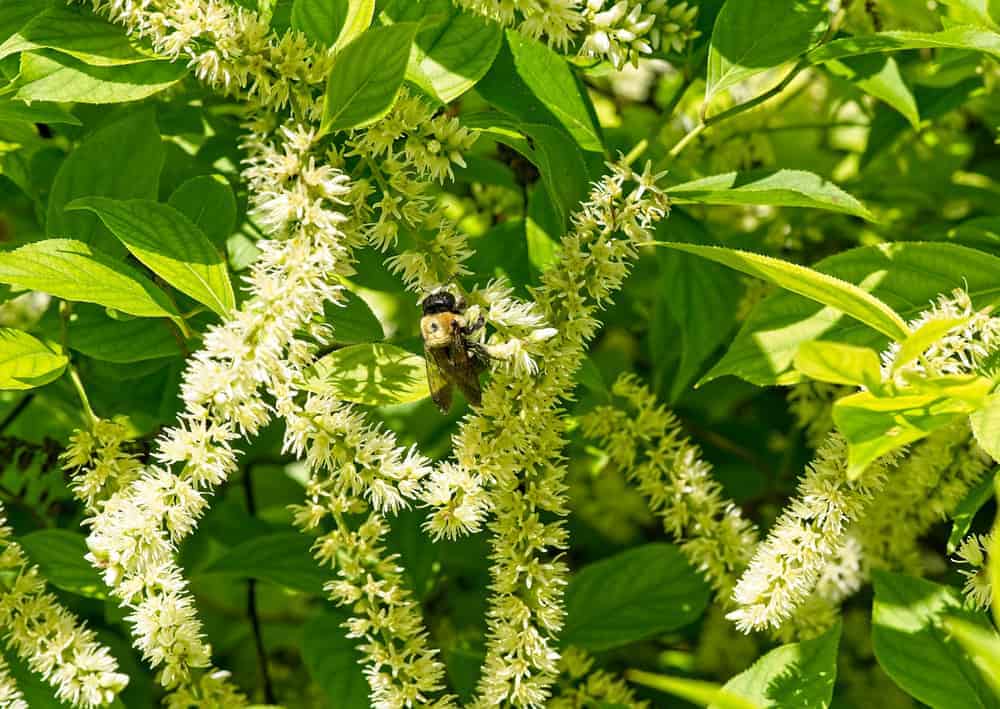
Butterfly bush attracts bees, which can become a problem for gardeners who are allergic to stings. If you are one of them, try to plant this shrub in the area away from your house or pool.
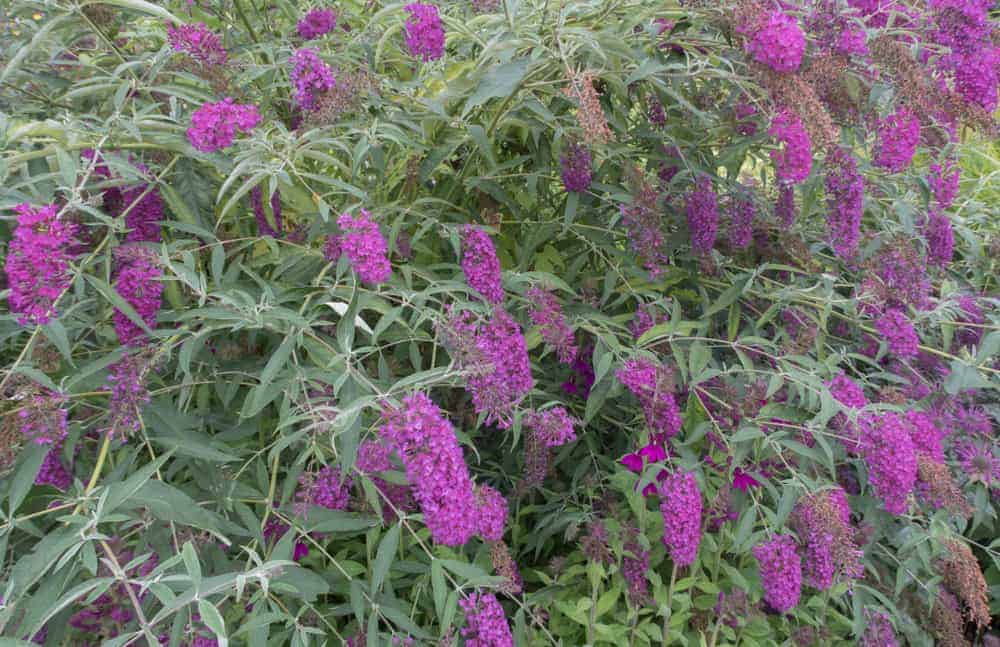
I have butterfly bushes in my garden, and they are always covered in butterflies. I get Monarch Butterflies every year. It is so much fun to watch.